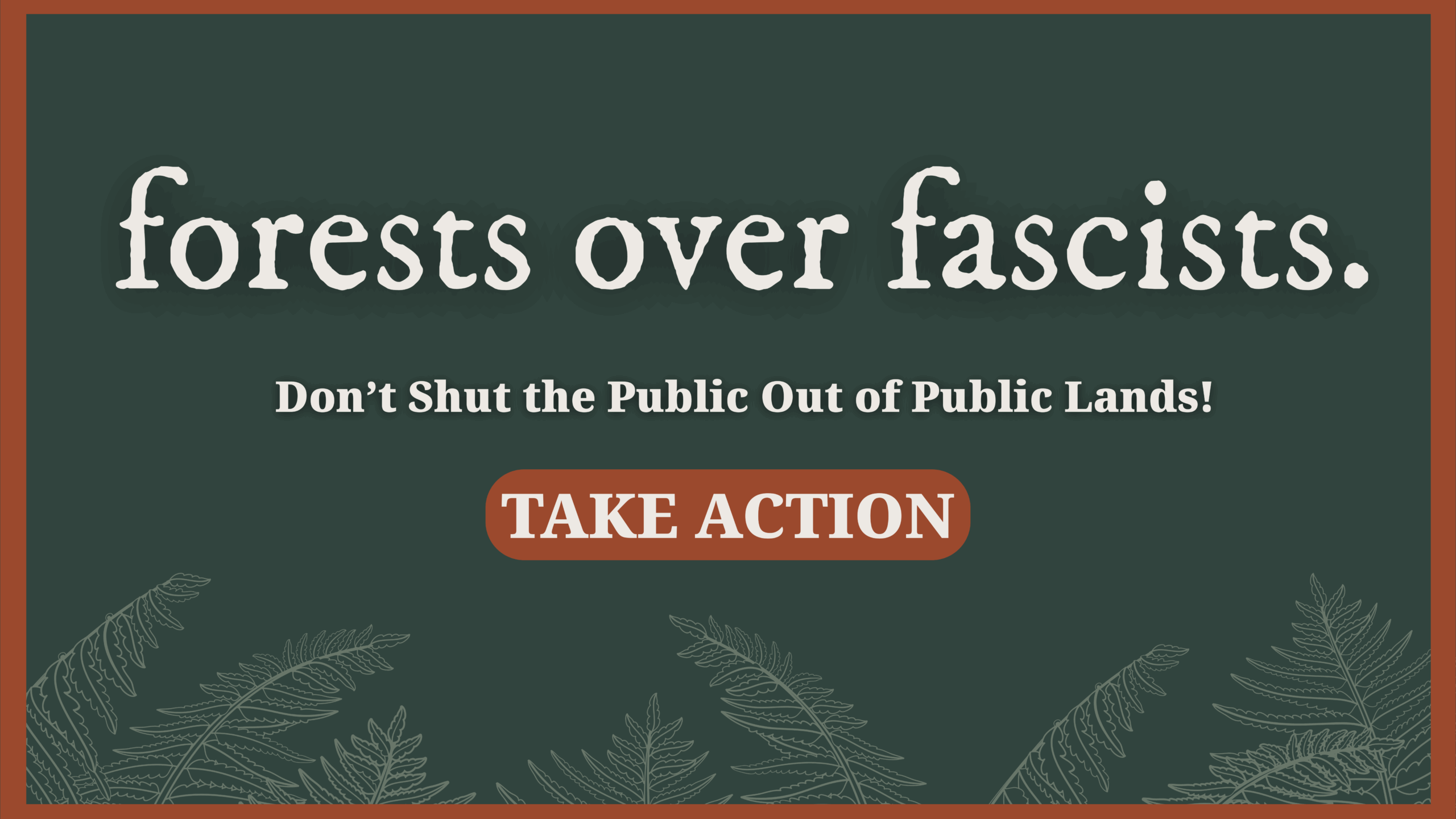by Gabe Scott, Cascadia Wildlands In-House Counsel
I’m sitting in the Drake Peak fire lookout tower in Oregon's Fremont-Winema National Forest for a long weekend with my young kids, taking in the wind-swept views while they explore the mountain, and watching a forest fire burn. As the sun sets it makes Mount Shasta glow fire-red in the distance, while an apocalyptic plume of smoke from the forest takes on a feathery pink. The sky darkens, and the kids come inside for food and stories. The fire casts an eerie glow in the night, and we wonder about it.
I’ve been wondering a lot about forest fires this past year, since moving back to Oregon from south-central Alaska. Just about everything that happens in forest policy here revolves around fire, one way or another.
Oregonians talk a lot about the rain, but really it’s the fires that we’ve found distinctive. As important and ubiquitous as fire is, the issue is an incredibly difficult thing to talk about or understand.
So let’s sit around the cooling flames for a story. The kids want to understand what is happening, and I want to be able to explain it to them.
In the Pacific Northwest, the story about fire is a profound one: it’s about birth and death, money and power, and a human animal who is deeply confused, scared, and mixed up about his place on the land. There are heroes and villains in this story. And you get to create your own ending.
Fire is scary
There is something primal and apocalyptic about the experience of fire.
Terror of fire is something we share with other animals. Bears, deer and rabbits flee from fire in a panic. It may be a trick of the eye, but the way big trees catch fire, their branches seem to shrink away from the flames, dancing convulsively as though the tree itself summons one last panicked attempt to run from the flames.
Fire is an enemy of “man.” It is an enemy of property, and of permanence. Like a hurricane, or a cold and stormy sea.
Heck of a fire season, again
At least, it seems like it has been. Ash has been falling from the sky in Seattle, Portland, and Eugene. Even more so in the southern Oregon Cascades and the Siskiyous. The sun and moon have cast an eerie, muted orange. Air quality warnings have flashed red exclamation points on our phones, and out-of-town relatives have inquired about our safety.
But was this a “bad” fire year?
Fire has burned across over a half-million acres of forest this summer in Oregon.
That’s a lot of acres.
But then again, Oregon is a big place, and fire ecologists have learned that just about all of our forests burn at one time or another. In the scheme of things, even a half-million acres of fire—a lot of fire!— isn’t unusual.
Whether a half-million acres burning is a lot, or not, sort of depends on what timeframe you are using. In the past fifty years, statistically there has been a huge increase in the acres of forest burning in wildfires. Look at the past hundred years though, and you can see that we need additional context.
(Source: Dominick DellaSala, Geos Institute, testimony US House Natural Resources Committee, Subcommittee on Oversight and Investigations, September 27, 2017).
That dip in the middle of the graph has resulted in what they call a “fire debt” on the forest. It is routine in the public land timber sales Cascadia Wildlands reviews to find the agency biologists bemoaning a fire-starved forest stand.
The “problem” of forest fires, a scientist would tell you, is a social problem, not an information problem. Two true things are in conflict: (1) ecologically, fire is beneficial and often necessary on many of Cascadia’s forests, and (2) humans, like (as) animals, do not tolerate fire in their midst.
Forest fires (usually) don’t kill the forest
Exploring Drake Peak with the kids, everywhere we went had been touched by fire. And it was beautiful. It is this way throughout Oregon, Washington and California: luxurious green forests grown from carpets of black ash.
While we speak and think in terms of fire “consuming” and “destroying” forests, this is not the case.
On the Eagle Creek fire in the Columbia River Gorge for example, even in places that had been glowing hellish red in high-intensity conflagrations this summer, many of the trees seem to have survived, and lots of patches of forest were left unburned. Even as the flames burned, ODFW was reassuring the public that wildlife and vegetation will adapt and thrive.
Cascadia’s forests are born of fire
Fire has always been in this landscape. Without it, the forests could not be. In different ways at different times, the fires of centuries past created the forest, wetlands and wildlife we love.
Ecologically, fire is hugely beneficial. The science is remarkably consistent. Here in Oregon the world’s foremost scientific experts on fire ecology are working and watching, eagerly studying this incredible process. To a person, they speak and think of forest fires as an integral part of the forest. To ecologists who study these things, fires are approached with something more like reverence than fear.
The lessons they’ve learned are familiar. Fires clear out underbrush, thin forests, favor some species over others, and provide homes for cavity-nesters like owls. Every schoolchild now learns the story of the Yellowstone fire, and how it unleashed an ecological cascade of restoration for the forest and wildlife.
Scientists now are studying how fire helps wild salmon and trout. Earlier this summer a Pacific Northwest Research Station report came out describing ways that wildlfires help wild salmon and trout thrive.
As it turns out, forests “dying” in fires are more like forests “dying” in the fall. It’s part of a cycle, not the end of a line.
The war on fire
Cold science is one thing, but hot passion is another. Too often the latter which tends to drive human behavior.
One result of those two true things— inevitability and fear of fire—is a hugely aggressive (and expensive, and dangerous) fire-fighting effort. Forest fires, being as ordinary a part of the seasonal cycle as rain, inevitably happen. We try to put just about all of them out.
We’ve gotten very, very good at it. Huge jet airplanes drop million-dollar loads of orange fire-retardant. A literal army of firefighters attack blazes with shovels, chainsaws, backfires, firebreaks, bulldozers, and water.
One result is that, thanks to firefighters, we have fewer fires. The small ones get put out.
As good as our firefighters are at what they do, did you know that they have never— not even once— been able to put out a large, intense wildfire? It’s true.
To satisfy the insatiable public need to fight every fire, firefighters are routinely asked to take incredible risks. I doubt I would have the courage to take half as much risk to save my own home from burning, as some of these hotshots take trying to save remote forests from burning.
While the safety culture is strong, especially among firefighting leadership, the war on fire comes with heavy casualties. Foremost are the lost firefighters.
Aggressively fighting fire also has an ecological cost. For example, this summer at Breitenbush Hot Springs in Oregon's Willamette National Forest, fire crews cut a fireline through a beloved old-growth hiking trail.
Logging the forest to save it
To a hammer every solution looks like a nail.
And to generations of foresters trained in cutting trees, the solution to forest fires has always been to cut the forest down.
It is routine in the timber sales we monitor at Cascadia Wildlands to find the agencies logging the forest to save it before it burns. Or, after it burns, they’ll want to “salvage” it.
Both notions are applied by with an un-ironic stubbornness that is almost comical.
There are grains of truth, and much of our day-to-day work consists of finding them. In the wildland-urban interface—where homes and property are built in forests that need to burn—thinning and strategic clearing can be very effective at saving property. And on some forest stands, careful thinning and prescribed burning is effective at both ecological restoration, and providing jobs and timber for mills. Cascadia Wildlands always tries to support these win-win solutions.
But while some work the ideas out carefully, politicians and the timber industry love to come in shouting emergency when fires are burning.
So we get things like the barely disguised propaganda video put out by the industry in Douglas County, questionably using taxpayer dollars.
Or we get things like Rep. Greg Walden's (R-OR) “Clearcut the Gorge” bill, which suspends all environmental laws to expedite clearcutting of the Gorge after this summer's Eagle Creek fire.
Or, even worse, the Rep. Bruce Westerman (R-AR) bill, with the Orwellian name “Resilient Federal Forests Act,” a salvage rider on steroids that would exempt massive logging, up to 30,000 acres, from environmental laws and careful planning.
We’ll be busy fighting these outrageous proposals in the months and years to come.
Drake Peak
Back to my fire lookout on Drake Peak. How to explain the sinister, burning forest to my curious children? What are we seeing? Is this Bambi’s home being destroyed?
I really don’t know what is the best way to think about fire, let alone to explain it. Emotionally they are scary. Intellectually they are essential and life-giving. The picture gets more complicated when you factor in global warming, and human developments concentrated in inconvenient places.
Whatever the right way, we surely do know that the wrong way to think about fire is to panic.
It is panic that gives the log-it-to-save it idea traction. It is panic that causes distant politicians to see burned forests as destroyed lifeless tracts that may as well be clearcut.
As for the best way to talk about fire, we’d love to hear your ideas in comments. The best I could come up with for my kids were two imperfect analogies:
A forest fire is like a rainstorm. It’s an uncomfortable thing that happens in nature. It is dangerous, and can even kill you if you aren’t prepared. But it also makes the land green, and without it we would die.
A forest fire is like autumn, but on a larger time scale. As in autumn the leaves die and animals disappear, but in a cyclical way, not a linear one. It is the kind of death that blurs into birth. For a forest, a fire is a turning of the wheel, not the end of the road.





Great informative article. I enjoyed it and learned a lot.